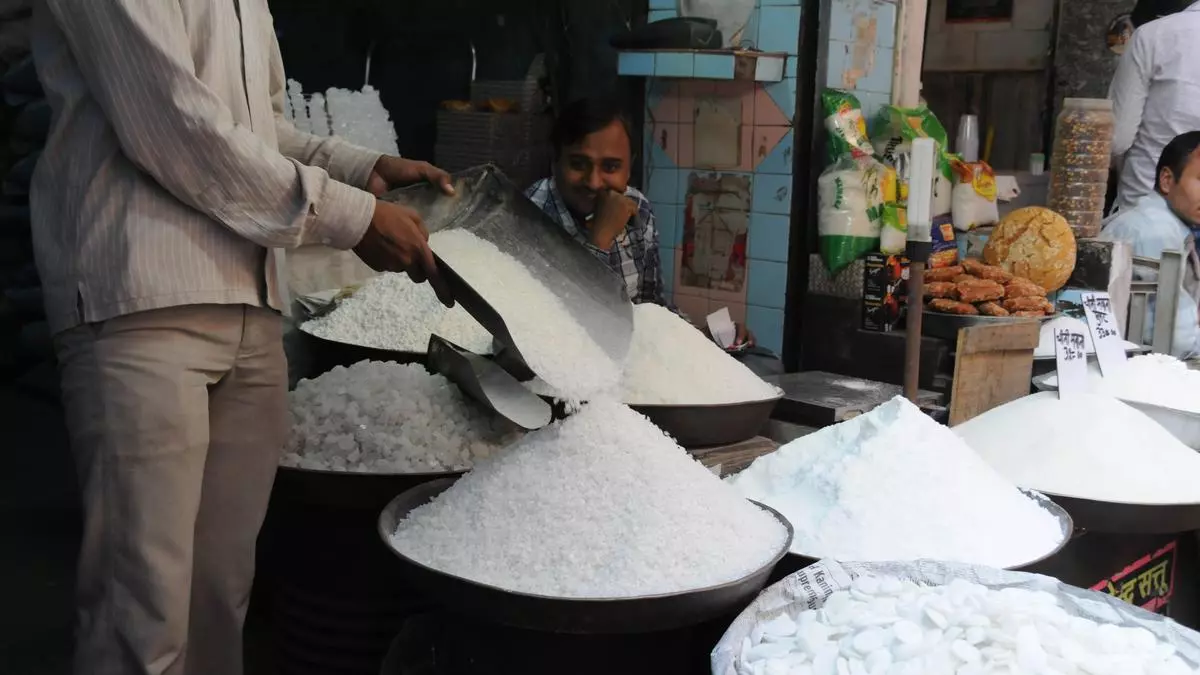Row over ISMA’s suggestion to regulate khandsari units
A request by the Indian Sugar and Bio-Energy Manufacturers Association (ISMA) to the Food Ministry to regulate and curb khandsari (raw and unrefined) sugar has triggered a controversy, with manufacturers of traditional sweeteners such as gur (jaggery) opposing it.
In a letter to Food Secretary Sanjeev Chopra in July this year, ISMA said it was concerned over the proliferation of khandsari units with crushing “capacity rising to as high as 2,000 tonnes a day” in Uttar Pradesh and Maharashtra. It alleged that the “unchecked growth” had led to unhealthy competition and adverse effects on the organised sugar sector. ISMA sought curbs on new units coming up, allowing them only outside the sugar mills’ catchment areas and with stringent controls, including on exports.
Ayurvedic ingredient
However, traditional sweeteners under the umbrella of Bharatiya Heritage Association of Khandsari and Traditional Sweeteners Industry (BHAKTI) said khandsari dates back to the Vedic ages and is an important ingredient of ayurvedic medicines. BHAKTI Director-General Shashikant Pandhare, in a letter to Chopra, said khandsari was nutritionally superior to sugar as it provides several nutrients such as calcium, magnesium, potassium, iron, antioxidants and fibre.
Refuting ISMA’s contention that khandsari units do not pay taxes, Pandhare said the only concession that these units enjoy is the 5 per cent GST exemption.
Stating that the sugar sector had got thousands of crores of rupees as incentives over the past few years, he said it has also been the sole beneficiary of the Sugar Development Fund. “Khandsari industry has not received one rupee of support,” the BHAKTI director-general said.
Under States’ control
On khandsari units getting sugarcane from catchment areas (which is reserved for specified mills in the areas), he said they operate under license from the State governments and are entitled to draw sugarcane as per annual allocation made to them.
On ISMA’s charges that khandsari units draw 12 million tonnes of sugarcane and work for only 160 days, he said the units do not operate to capacity as the government does not support them. “A study by ISMA a few years ago (available in public domain) says they operated for 100-120 days. On that basis, 100 per cent of khandsari capacity will be marked down to 8.6 million tonnes. As per the information gathered by us, khandsari units crush about 4 million tonnes of sugarcane contrasted with about 320 million tonnes crushed by sugar mills,” said Pandhare.
On the Indian sugar mills seeking ban on export by khandsari units, he said while ISMA is seeking permission to export 2 million tonnes of sugar, it is “proposing restrictions on what is permissible under the law”.
Against ease of doing Filesadmin.co
“Exports of Khandsari from October 2023 to June 2024 have been just a little over 2 lakh tonnes. Indian diaspora would have nowhere to go for these healthy and heritage products should restrains be extended to khandsari,” the BHAKTI director-general said.
Refuting ISMA’s charge that khandsari units that can crush 2,000 tonnes per day are being set up, he said only 50 of the 272 units can crush over 500 tonnes a day. These units are proposed to be covered by the proposed 2024 Sugar Control Order. “Our submission is that it (khandsari) is too small a segment to bring under the Centre’s control while State governments’ control exists not only on these 50 units but on smaller units too. Our submission is that this would run contrary to our nation’s journey towards achieving ease of doing business,” said Pandhare.
Stating that BHAKTI supports ISMA’s demand to export 2 million tonnes of sugar, he, however, said the Centre should not be “swayed by the false narrative” against khandsari units.
